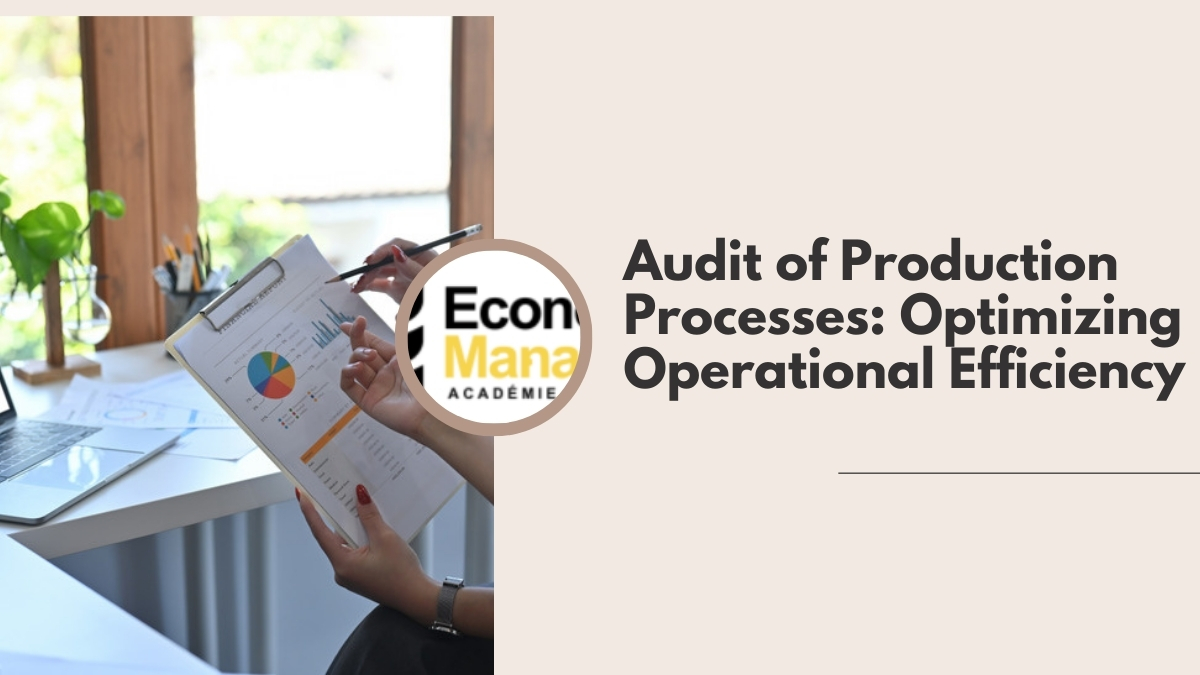Security audits serve as an essential safeguard, helping businesses identify vulnerabilities, ensure compliance, and ultimately protect their sensitive information from potential breaches. By proactively assessing their security posture, organizations can fortify their defenses, mitigate risks, and build resilience against an array of malicious actors and adverse events.
Table de matières
Understanding the Importance of Security Audits
In the digital age, businesses operate in an environment of heightened risk. With cyber threats and sophisticated attack vectors on the rise, organizations must navigate a treacherous terrain to safeguard their most valuable assets. Data breaches, unauthorized access, malware infections, and phishing attacks are just a few of the dangers that loom large. The impact of such incidents can be devastating, resulting in financial losses, damaged reputations, eroded customer trust, and even legal repercussions.
This is where security audits emerge as a powerful tool in a business’s defensive arsenal. A security audit involves a comprehensive assessment of an organization’s security posture, encompassing its policies, procedures, technologies, and controls. It identifies weaknesses, exposes gaps, and provides a reality check on the effectiveness of existing security measures. By undergoing regular security audits, businesses can proactively address vulnerabilities, reinforce their defenses, and significantly reduce the likelihood and impact of security incidents.
Benefits of Conducting Security Audits
Security audits offer a multitude of advantages that contribute to the overall resilience and longevity of a business. Here are some key benefits:
Lire Aussi: [PDF] 7 exercices corrigés sur le bilan comptable
- Risk Mitigation: Audits help identify and address risks before they manifest as full-blown security incidents. By uncovering vulnerabilities and implementing corrective measures, businesses can reduce their attack surface and thwart potential threats.
- Compliance Assurance: With an ever-growing web of regulations and standards such as GDPR, PCI DSS, and HIPAA, security audits help ensure compliance. This is crucial for avoiding fines, legal repercussions, and reputational damage.
- Data Protection: Audits safeguard sensitive data by evaluating access controls, encryption methods, and data storage practices. This prevents unauthorized access, theft, or misuse of critical information.
- Improved Security Posture: Security audits provide a holistic view of an organization’s security effectiveness. They offer insights for enhancing security strategies, allocating resources efficiently, and implementing industry best practices.
- Business Continuity: By identifying single points of failure and potential disruptions, audits bolster business continuity. This ensures that operations can continue uninterrupted, even in the face of adverse events.
- Customer Trust and Confidence: Demonstrating a commitment to security through regular audits builds customer trust. This can lead to increased customer loyalty, improved brand reputation, and a competitive edge in the market.
Types of Security Audits
Security audits come in various forms, each serving a distinct purpose and addressing specific aspects of an organization’s security posture.
Internal Audits
Conducted by in-house personnel or an organization’s internal audit team, internal audits offer a first-party perspective on security effectiveness. These audits assess compliance with internal policies and procedures, identify gaps in security controls, and ensure that security standards are being met. Internal audits are valuable for ongoing security maintenance and can be performed more frequently due to their lower cost and easier implementation.
External Audits
External audits are performed by independent third-party auditors who bring objectivity and specialized expertise to the table. These audits are often required for compliance with regulatory frameworks or industry standards. External auditors assess an organization’s security posture from an outsider’s viewpoint, simulating real-world attack scenarios and providing unbiased recommendations for improvement.
Lire Aussi: idée d'entreprise : génération, sources et méthodes
Compliance Audits
Compliance audits focus on ensuring that an organization meets the requirements of specific laws, regulations, or industry standards. These audits verify that security controls and processes are in place to satisfy compliance mandates. Non-compliance can result in significant fines, legal consequences, and reputational damage. Examples include audits for PCI DSS compliance in the payment card industry or HIPAA compliance in the healthcare sector.
Technical Audits
Technical audits delve into the technological infrastructure of an organization, evaluating the security of networks, systems, applications, and data. These audits identify vulnerabilities in hardware, software, and configurations that could be exploited by attackers. Penetration testing, vulnerability assessments, and security scanning are common techniques employed in technical audits.
Physical Security Audits
Physical security audits assess the measures in place to protect personnel, facilities, and assets from physical threats such as theft, vandalism, or unauthorized access. This includes evaluating access controls, surveillance systems, security personnel, and environmental factors that could impact the safety of the organization’s physical premises.
Lire Aussi: Top 10 Project Planning Best Practices You Should Follow
The Security Audit Process
A well-structured security audit process follows a defined methodology to ensure comprehensive coverage and effective results. Here’s a step-by-step breakdown of the key phases involved:
Planning and Scope Definition
The first step is to define the scope and objectives of the audit. This involves identifying the assets, systems, or processes to be audited, as well as determining the timeframe and resources required. A clear understanding of the organization’s goals and any specific concerns or areas of focus is essential for tailoring the audit plan.
Information Gathering
In this phase, auditors collect and review relevant documentation, including policies, procedures, network diagrams, system configurations, and previous audit reports. This provides a foundation of knowledge about the organization’s security posture and helps identify potential areas of concern.
Risk Assessment
Auditors conduct a thorough risk assessment to identify and analyze potential threats, vulnerabilities, and impacts. This involves evaluating the likelihood and potential damage of various security risks, helping to prioritize and focus the audit efforts.
Control Testing and Vulnerability Assessment
Through a combination of automated tools and manual techniques, auditors test security controls and assess vulnerabilities. This may include penetration testing, social engineering simulations, policy and procedure reviews, and interviews with key personnel. The goal is to identify weaknesses and determine the effectiveness of existing controls.
Reporting and Recommendations
The audit findings are compiled into a report that outlines identified vulnerabilities, associated risks, and recommended corrective actions. The report should provide a clear and concise summary of the audit process, outcomes, and priorities for improvement.
Remediation and Follow-up
Based on the audit report, the organization implements corrective measures to address identified vulnerabilities. This may involve implementing new security controls, updating policies, providing security awareness training, or making necessary changes to infrastructure or processes. Follow-up audits may be conducted to verify that recommended actions have been effectively implemented.
Best Practices for Effective Security Audits
- Frequency and Regularity: Security audits should be conducted regularly and with varying frequency depending on the dynamics of the organization. High-risk areas or rapidly changing environments may require more frequent audits.
- Independence and Objectivity: Auditors should maintain independence and objectivity in their assessments. External auditors, in particular, bring a fresh perspective and unbiased judgment to the table.
- Comprehensive Scope: The audit scope should cover all critical areas, including technical, physical, and procedural aspects of security. A narrow focus may overlook important vulnerabilities.
- Risk-based Approach: Audits should be risk-driven, focusing on high-impact areas first. A thorough risk assessment helps prioritize and allocate resources effectively.
- Automated and Manual Testing: A combination of automated tools and manual techniques provides the best of both worlds. Automated tools offer efficiency and coverage, while manual testing brings human expertise and creativity.
- Continuous Monitoring: Security is a dynamic field, and threats are constantly evolving. Implementing continuous monitoring allows for the early detection of vulnerabilities and provides a proactive approach to security management.
- Clear and Actionable Reports: Audit reports should be clear, concise, and free of jargon. They should provide specific and actionable recommendations for improvement, helping organizations prioritize their efforts.
Common Challenges and How to Overcome Them
Security audits come with their fair share of challenges, but recognizing and understanding these obstacles can help organizations develop effective strategies to overcome them.
Resource Constraints
Security audits require dedicated time, personnel, and financial resources. For organizations facing resource constraints, it’s crucial to prioritize security as a critical investment. The potential costs of a data breach or security incident far outweigh the expenses of conducting regular audits. Outsourcing audits to third-party specialists can also help alleviate the burden on internal resources.
Lack of Buy-in
Securing organizational buy-in is essential for the success of security audits. Educating stakeholders about the benefits of audits, including risk mitigation, compliance assurance, and improved business continuity, can help garner support. Demonstrating the potential financial and reputational impact of security incidents may also emphasize the value of proactive security measures.
Resistance to Change
Change can be met with resistance, especially when it involves implementing new security controls or processes. Communicating the reasons for change and involving stakeholders in the decision-making process can help ease resistance. Highlighting the potential consequences of inaction and showcasing successful implementations in similar organizations can also foster a more receptive environment.
Limited Expertise
Security audits require specialized knowledge and skills. For organizations lacking in-house expertise, partnering with external security consultants or managed security service providers (MSSPs) can fill the gap. These third-party experts bring a wealth of experience and can offer customized solutions tailored to the organization’s unique needs.
Inadequate Tools and Technologies
Keeping pace with evolving security threats demands the use of advanced tools and technologies. Organizations should invest in innovative solutions, such as security information and event management (SIEM) systems, intrusion detection and prevention systems, and automated vulnerability assessment tools. Leveraging machine learning and artificial intelligence can also enhance detection capabilities and improve overall security posture.
Conclusion
In a world where cyber threats are ever-present and data is an organization’s most prized possession, security audits serve as an indispensable safeguard. By conducting regular assessments of their security posture, businesses can fortify their defenses, protect sensitive information, and build resilience against a myriad of potential dangers. Security audits are not a one-time event but a continuous journey that demands commitment, resources, and a proactive mindset.
Through the process of identifying risks, testing controls, and implementing corrective measures, organizations can stay one step ahead of malicious actors. The benefits are clear: enhanced protection of critical assets, improved compliance posture, and increased customer trust and confidence. In an era defined by digital transformation and escalating cyber threats, security audits are the cornerstone of a robust and resilient business.
As organizations navigate the complex landscape of modern business, security audits provide a compass, guiding them toward a safer and more secure future. By embracing this vital practice, businesses can protect their most valuable assets, ensure continuity, and thrive in an environment where threats are ever-evolving but safeguards remain steadfast.







